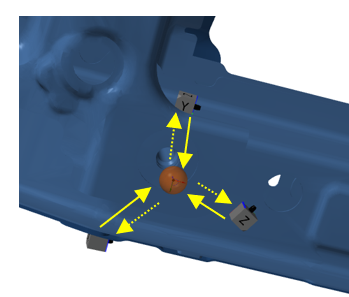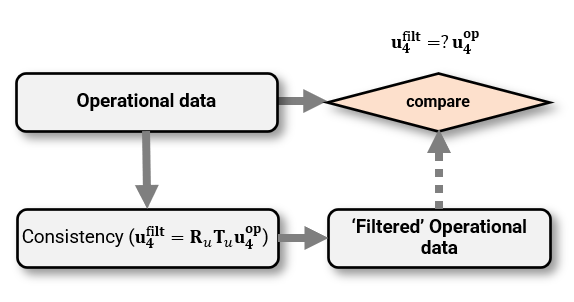Software updates DIRAC and SOURCE
13 December 2021
Coming soon: DIRAC V3.2 and SOURCE V1.5! In this article we’ve emphasized some of the new and improved features that can be expected….
Undo/redo feature in DIRAC
One of our clients suggested adding a undo/redo feature to DIRAC. This way, actions can be reversed and/or redone. After implementing the feedback that we got on a first version of this feature, we have now implemented the final feature in DIRAC V3.2, ready to be applied by all users.
When for instance working on a design of experiment, actions like positioning the sensors, aligning the Virtual Point or setting the impact can be undone and redone in a user-friendly manner. This way, it is even easier to design an experiment in DIRAC.
Matrix post-processing in DIRAC
Matrix post-processing options have been added to the Analyze module. These options serve to perform additional calculations on the selected subset of the FRF matrix, specified as matrix presets. The options apply to so-called Custom Matrix Presets. Options are available for:
- Converting the measured accelerance to another representation, such as receptance or dynamic stiffness. As a result, time-integration and matrix inversion is applied depending on the chosen representation. Note that only kinematic quantities such as Acceleration (m/s^2) and Rotational Acceleration (rad/s^2) are time-integrated; other quantities such as Sound Pressure (Pa) are unaffected.
- Transposing the matrix to obtain the reciprocal representation. This can be useful to get a reciprocal matrix, where the excitation positions become response positions and vise versa. The resulting quantities and units can be observed in the information panel.
- Element-wise inversion, as an alternative to the default option which uses full matrix inversion.
Virtual Point consistency metric in SOURCE
Evaluating the quality of your model in real-time during the measurement is crucial for efficiently measuring accurate and reliable data. SOURCE has several quality indicators and the consistency metric is one of them.
The consistency metric evaluates the validity of the Virtual Point Transformation of the measurements. It takes geometric information and physical modeling assumptions of the Virtual Points into account. Thus, the consistency evaluates the integrity of the experimental model of the system. It considers multiple channels together and not just the individual signal. Using Virtual Point Technology (VPT), the operational consistency metric represents the response of the acceleration channels in relation to one another.
Operational consistency can show one if there is no weird behavior in the operational measurements, i.e. there are no overloads or strange physical (non-linear) phenomena. It furthermore indicates that the sensors are consistent with one another: no sensors have been moved or gotten loose.
Improved auralization with high and low pass filtering in SOURCE
The new improved auralization package enables you to apply low and high pass filters to your time domain conversion. Now, you can focus precisely on the frequency range you are interested in. Low frequent noise or higher frequent disturbances do no longer mask you results. Thus, you can create auralizations of your predictions of very high quality.
Zero-padding in SOURCE
SOURCE now allows you to enhance the resolution of your frequency result by zero-padding. when you request a frequency resolution beyond what the original time-data allows in a normal FFT, SOURCE will zero-pad the time signal in order for you to obtain the requested resolution. You are then no longer limited to choosing either the block length or frequency resolution, you can now set both.
DIRAC V3.2 and SOURCE V1.5
DIRAC V3.2 is expected the 17th of December 2021. SOURCE V1.5 will soon follow, at the end of December. For all the updates, please check the DIRAC release notes and the SOURCE release notes in our Academy.


